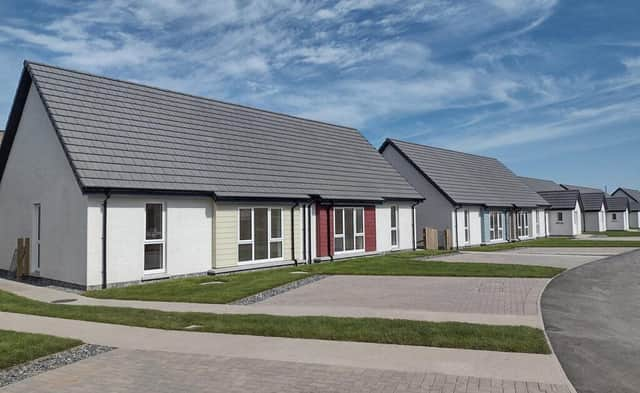‘Granular’ decision-making lacking in policy


This is as close a new Rural and Island Housing Strategy comes to recognising that current policies have failed to deliver affordable housing in areas worst affected by population loss.
The document states: “A Housing Need and Demand Assessment is used by local authorities to inform housing-related policy responses through the Local Housing Strategy and Strategic Housing Investment Plans.
Advertisement
Hide AdAdvertisement
Hide Ad“The Scottish Government recognises for rural and island communities that it may not provide the granular level of information required to support local housing decisions such as what type, size and tenure of homes may be required.”
However, no commitment is given to more local decision-making and the “action” proposed is to “develop guidance to support communities, local authorities and others to undertake local housing assessments based on best practice and robust methodology”.
The document appears to support partnerships with industries, specifically aquaculture, to provide housing for employees. It states: “Recent examples of positive partnership between communities, the sector, and Scottish Government, where the Rural and Islands Housing Fund has played a key role in supporting the delivery of new homes are in Rum and Colonsay.
“Building on such examples, we will continue to work with the aquaculture sector and others to utilise these partnerships and facilitate collaborative working between the sector and the communities they operate in to support workforce growth”.
Advertisement
Hide AdAdvertisement
Hide AdThere is also a commitment to “review the Croft House Grant scheme annually”. The document states that since January 2007, it has “helped to build and improve over 1100 croft homes”, an average of about 65 a year across the Crofting Counties.
Other commitments include:
- work with the Scottish Empty Homes Partnership in bringing more empty homes back into use;
- support community-led affordable housing development, through the continuation of the Rural and Islands Housing Fund with up to £30 million this Parliament
- explore the potential and impact of modern methods of construction in rural and island contexts;
Advertisement
Hide AdAdvertisement
Hide Ad- give local authorities new powers to apply higher council tax rates for second homes from April 2024;
The document adds: “In summer 2024, we will commission independent research to support a review of affordable home ownership in remote, rural and island areas. We will consider the findings of this research and any recommendations to inform our next steps”
The Housing Minister, Paul Maclennan, said there would be an “annual summit” to monitor delivery: “We recognise that this is a first step, a statement of intent about how we will tackle housing supply in our rural and island communities, and we will hold ourselves to account to deliver meaningful progress’.